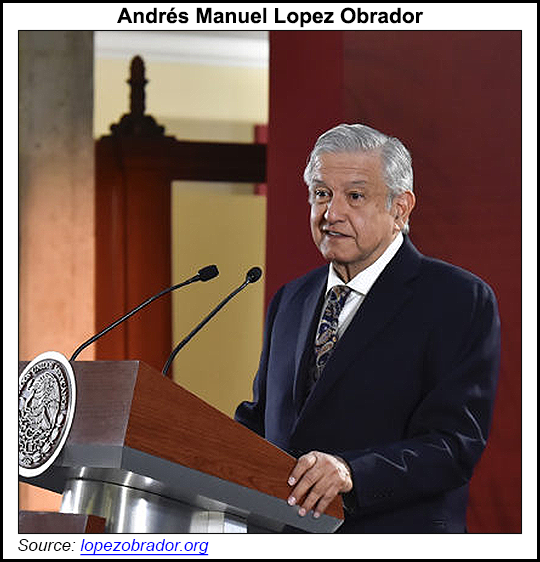Regulatory | NGI All News Access | NGI The Weekly Gas Market Report
Increasing Political Risk Across Latin America Forecast for 2020
Social unrest and distrust in governments were common themes across Latin America in 2019 and more of the same is expected in 2020, according to global ratings agencies and political risk groups.

Public anger will keep the risk of political instability high across Latin America, said analysts at political risk consultancy Eurasia Group. “Voter complaints include sluggish growth, corruption, and low-quality public services. Even worse for governments, new and vulnerable middle classes want more spending on social services, and Latin American societies are deeply polarized.”
The political and economic outlook in general is poor, according to Eurasia Group, which predicted further protests across the region, deteriorating fiscal balances and unpredictable elections with populist and anti-establishment candidates gaining favor.
Analysts at business intelligence group Economist Intelligence Unit echoed Eurasia analyst conclusions in a report issued late last year. The business intelligence group argued that 2020 would see protests being contagious in Latin America; widespread protests seen in Colombia at the end of 2019 were inspired by events elsewhere, including in Chile and Venezuela. “There is a strong chance that 2020 will be another volatile year for Latin America,” the Economist Intelligence Unit report said.
Ratings agencies Fitch Ratings and Moody’s Investors Service also approach 2020 with negativity.
“Latin America faced a difficult year in 2019, cumulating in major political upheaval across the region, and we do not expect 2020 will be much easier,” Fitch credit analysts said.
If there is one bit of good news, it is that Mexico enjoys relative stability in the region. With socialist President Andres Manuel Lopez Obrador still popular, Mexico has been able to avoid some of the large-scale protests seen in Ecuador, Bolivia, Chile, Colombia and Venezuela, which proved hobbling to these economies, and which dragged on governability.
Eurasia Group analysts, however, warned that while Lopez Obrador remained popular, “his promise to maintain fiscal stability while increasing spending will be difficult to maintain. He’s committed to boosting social and infrastructure spending while grappling with a slowing economy and lower oil production. Lopez Obrador will push through austerity measures and raise taxes, but these won’t be enough. Security conditions will worsen.”
Mexico saw zero gross domestic product (GDP) growth in 2019. For 2020, Mexico’s Central Bank is forecasting GDP growth of 0.8-1.8%, but still far from the 4% annual GDP growth figure Lopez Obrador promised during his 2018 election campaign.
Eurasia Group analysts said the region’s largest economy Brazil is one that is potentially economically promising for 2020, but “public anger will come quickly if current forecasts for a rebound don’t pan out.”
Eurasia Group noted that Latin American nations are hardly unique as the global outlook in 2020 is “troubling.”
“The global economy, after emerging from the great recession of 2008 with the longest expansion of the post-war period, is now softening,” analysts said.
“More economists expect a recession in 2020 or 2021. And the world is now entering a deepening geopolitical recession, with a lack of global leadership as a result of American unilateralism, an erosion of U.S.-led alliances, a Russia in decline that wants to undermine the stability and cohesion of both the U.S. and its allies, and an increasingly empowered China under consolidated leadership that’s building a competitive alternative on the global stage.”
© 2024 Natural Gas Intelligence. All rights reserved.
ISSN © 2577-9877 | ISSN © 2577-9966 | ISSN © 1532-1266 |
